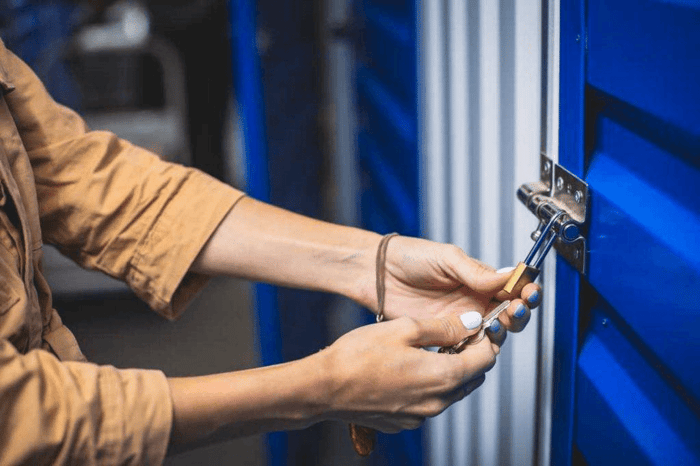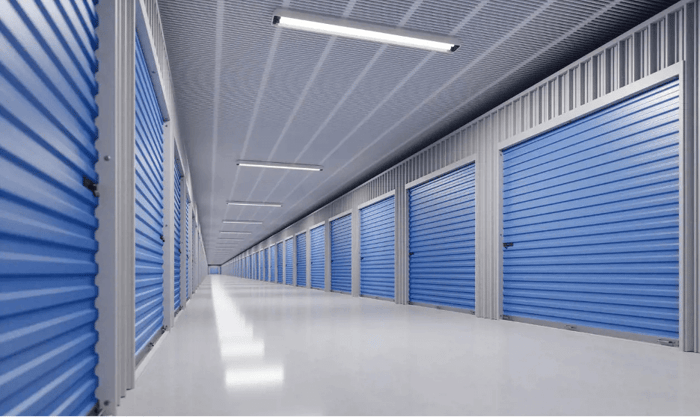If you’re downsizing, moving, decluttering, or storing your seasonal outdoor gear, a self-storage unit can be an excellent solution for everyone. However, with so many options - including drive-up, climate-controlled, enclosed, RV, boat, and business storage it’s easy to become overwhelmed.
This guide from Premier Storage explains everything you need to know to pick just the right self-storage unit for you, whether it’s for your belongings, your lifestyle, or even your year ahead.
Why Self Storage? A Growing Necessity
More than ever before, Americans are turning to self-storage. One in about every eleven households rents a storage unit, according to the Self Storage Association. Between the rise of remote work and the fact that humans need to have hobbies, stores that you stuff it in are no longer just for movers; they’re now a lifestyle choice.
Step 1: Determine What You Want to Store
The most important and first step is listing the items you are going to keep. Here’s a handy reference table to line up items with storage types:
Item Category | Recommended Storage Type |
Furniture & Appliances | Drive-Up or Climate Controlled |
Documents & Electronics | Climate Controlled Storage |
Boats & Jet Skis | Outdoor or Covered Boat Storage |
RVs & Campers | Enclosed or Outdoor RV Storage |
Business Inventory | Secure, Drive-Up or Indoor Units |
Holiday Decorations | Indoor or Climate Controlled |
Seasonal Gear (Skis, Bikes) | Climate Controlled or Drive-Up |
Pro Tip
If your belongings are temperature-sensitive, such as wooden furniture or electronics, a climate-controlled storage unit can help prevent warping, mildew, and corrosion.
Step 2: Choose the Right Size
Selecting the correct unit size prevents you from overpaying for space you don’t need or cramming everything into a unit that’s too small.
Here’s a general size guide:
Unit Size | Fits About… | Ideal For |
5’x5’ | Small closet | Boxes, small furniture, seasonal décor |
5’x10’ | Walk-in closet | Studio apartment, bike, small mattress |
10’x10’ | Half of a one-car garage | 1-bedroom apartment furnishings |
10’x15’ | Two-thirds of a garage | 2-bedroom apartment or small house items |
10’x20’ | Full one-car garage | 3-bedroom home, small vehicle |
10’x30’ | Extra-large garage | Large homes, commercial storage needs |
Still unsure? Many storage facilities, such as Premier Storage, offer visual size guides or in-person tours to help you make an informed choice.
Step 3: Match the Features to Your Needs
Every item has different storage requirements. Consider the following factors when selecting your unit:
Security
Opt for storage spaces with:
Gated access
Well-lit areas
Individual unit locks
Video surveillance
While we won’t mention “24/7” anything per your request, it's worth ensuring the facility has consistent, monitored security practices in place.
Climate Control
Climate-controlled storage keeps temperature and humidity levels stable, critical for:
Musical instruments
Electronics
Photographs
Leather goods
Antique furniture
Drive-Up Access
Drive-up storage is perfect for:
Heavy, bulky items
Frequent loading/unloading
Tools and workshop storage
It minimizes effort and time, especially during moves or renovations.
Boat & RV Storage
If you own recreational vehicles, look for:
Outdoor parking pads
Covered storage for sun/rain protection
Enclosed storage for year-round security
Step 4: Residential vs. Business Storage
Residential Storage
Perfect for:
Downsizing
Home renovations
Seasonal storage (holiday items, garden tools)
Decluttering before a sale
Business Storage
Best for:
Inventory overflow
File/document storage
Contractor tools and equipment
Trade show materials
Many businesses, especially small ones, utilize self-storage to avoid the costs associated with commercial leases.
Step 5: Consider Seasonal Needs
Choosing a self-storage unit can be a seasonal decision. Here’s a breakdown of how needs may change throughout the year:
Season | Common Storage Needs |
Spring | Winter gear, holiday decorations, snow equipment |
Summer | School storage, RV/boat use, moving storage |
Fall | Lawn equipment, patio furniture |
Winter | Bikes, gardening tools, summer sports gear |
Seasonal storage tip
Plan for the next season. Reserve your unit before peak demand (e.g., book RV storage in late winter to beat the spring rush).
Step 6: Think Long-Term (Even if It's Short-Term)
Most people initially rent a storage unit for a few months but end up keeping it longer.
Questions to ask:
Do I need long-term protection from humidity and pests?
Will I need frequent access?
Could my storage needs grow over time?
A slightly larger unit than you currently need may provide flexibility and prevent future reshuffling.
Step 7: Don’t Forget Insurance
Some homeowners' or renters' insurance policies cover storage units, but not all. Ask your provider:
Is my property covered while in storage?
Is there a value limit?
Are there any excluded items (such as jewelry, cash, or collectibles)?
Alternatively, many storage facilities offer tenant insurance plans for added peace of mind.
 Step 8: Visit the Facility Before Committing
Step 8: Visit the Facility Before Committing
Online research is helpful, but nothing replaces an in-person visit. Check for:
Cleanliness
Lighting
Accessibility
Staff professionalism
Clear signage
When comparing storage facilities in your area, ask for a tour to get a genuine sense of the space and how your items will be protected.
Step 9: Ask the Right Questions
Before you sign a rental agreement, consider asking:
Are there any move-in specials or discounts?
Is there a minimum rental period?
How are payments handled (online, auto-pay)?
Are there restrictions on what I can store?
What’s the policy for accessing my unit?
Clarity upfront will save you surprises down the road.
Step 10: Prepare Your Items Properly
Packing and storing items correctly can protect them over time.
Basic Storage Prep Tips
Label all boxes clearly.
Disassemble furniture when possible.
Use mattress bags and furniture covers.
Avoid plastic bags (can trap moisture)
Place heavier boxes on the bottom.
Leave a small walkway for easy access.
For Climate Controlled Units
Store electronics in original packaging if available
Avoid placing valuables directly on the floor.
Use moisture absorbers for added protection.
Storage Myths to Ignore
Let’s bust a few myths that might mislead you:
Myth | Reality |
“All units are the same.” | Features, size, and security vary widely. |
“Outdoor storage is risky.” | Quality outdoor storage for boats/RVs is designed to be durable and secure. |
“Climate control is a luxury.” | It’s essential for temperature-sensitive items, such as wood, photos, or electronics. |
“I’ll only need it for a month.” | Most people end up using their units longer than expected. |
“Packing doesn’t matter.” | Proper packing extends the life of your belongings. |
When in Doubt, Ask the Experts
With dozens of locations and a wide variety of storage solutions, including drive-up, climate-controlled, RV, boat, trailer, business, and residential storage, Premier Storage is here to help you find the perfect fit for your needs.
Make Storage Work for You
Choosing the right self-storage unit doesn’t need to be overwhelming. When considering what you're storing, how long you'll store it, and which features are most important to you, you can make a confident choice about the storage space that suits your lifestyle.
Whether you're looking for secure boat storage, climate-controlled storage for electronics, or simply a convenient space during a move, Premier Storage has a solution tailored to you.
Ready to find the perfect unit? Explore our locations and available options at https://yourpremierstorage.com/






